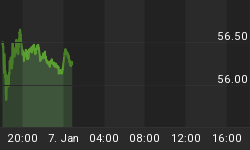While no one is lining up to buy ABBA records these days, it sure feels like the 1970s are back. Stagflation has reappeared, gold has awakened from its long hibernation, and Donald Rumsfeld & Dick Cheney are doing their thing in Washington. Given this environment, an investor would be wise to consider allocating a portion of his wealth to non-Dollar assets. But which ones?
Government bonds of major industrialized nations don't seem like such a terrible idea. But most of the easy money has already been made in our opinion. The Euro has increased by over 50% versus the Dollar and newspapers are now loaded with statements from European finance ministers complaining about their currency's strength. And any significant appreciation in the Yen will likely be combated with Japanese Central Bank intervention. Other currencies may be appealing, but the reality is that the politicians at central banks around the world do not want to see exports hampered by a rising currency.
So this brings us back to the world's two oldest currencies, gold and silver. The yellow and grey dog shined during the 1970s, with silver posting a much higher increase on a percentage basis. So does this mean that silver will once again outpace gold over the coming decade?
While gold certainly has its industrial applications, the fact is that most of the gold that has ever been mined has been for investment or jewelry and, as such, still exists today. Contrast that to silver, where the majority of ounces produced today are consumed in a variety of industrial processes. In fact, silver runs an annual deficit somewhere in the neighborhood of 70-80 million ounces which, when factoring in a reported global above-ground supply of 500-600 ounces, means that a silver shortage isn't too far away. So simply from looking at the fundamental supply & demand picture, silver seems like the clear winner.
Gold bugs will usually counter with three legitimate arguments. First, they will say that some of silver's applications (such as photography) are going away. Second, there are likely hundreds of millions of unreported silver ounces sitting above ground, mostly in China & India. And third, although silver was once money, it seems to have moved away from the "precious" metal category towards the "industrial/base" metal category over the last few years.
Silver bugs will come back with the following: While some of silver's applications such as photography are slowly going away, the effect net of recycled scrap is rather minor, and besides, other applications are taking their place. Regarding unidentified stockpiles, it now appears that Chinese & Indian central bank stockpiles have been largely exhausted according to the most knowledgeable industry sources. (We're talking about mining executives who regularly visit Asian mines) Finally, the investment demand for silver is so poor now; it really couldn't get any worse. Besides, some countries such as Mexico have shown hints of a desire to back their currencies with silver, and more importantly, a silver ETF now appears only a matter of time.
So what should you do? Will silver once again outpace gold like it did in the 1970s? Or will silver suffer with other industrial commodities once the global economy (especially China) slows down? We tend to think that no matter what happens, both metals will move in the same direction. If the gold bugs are right, gold will outshine silver on its way up. If the silver bugs are right, then silver will lap gold. We would suggest holding both.















